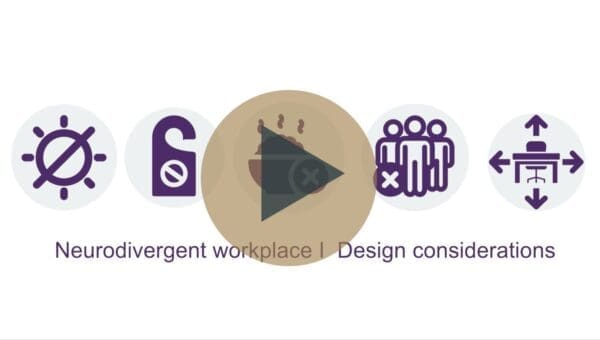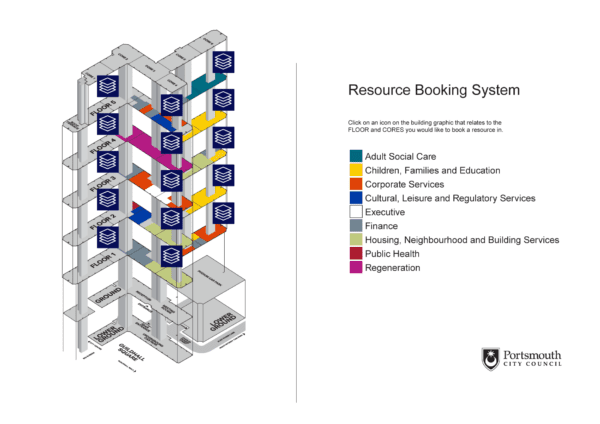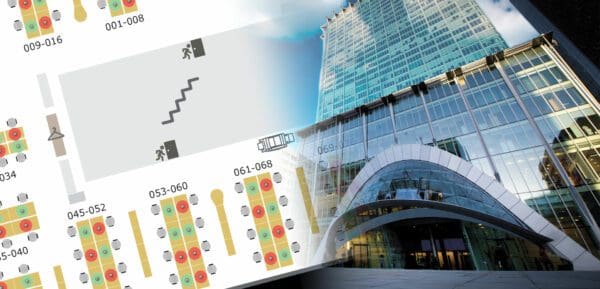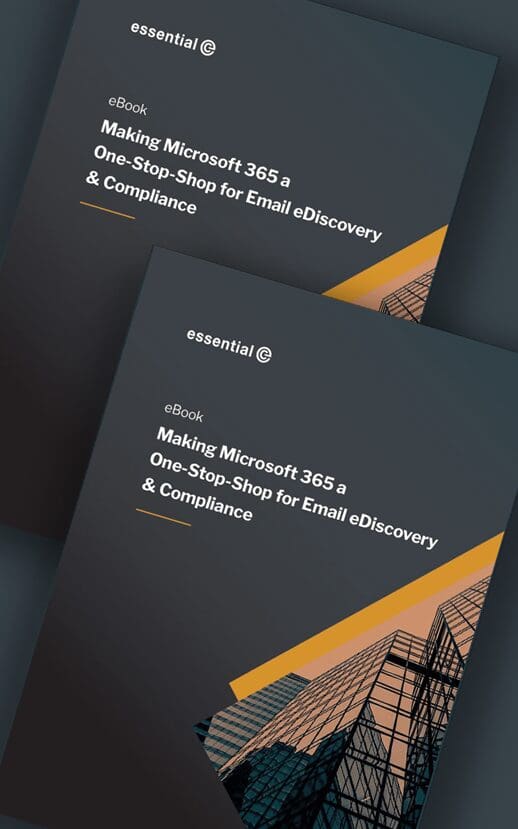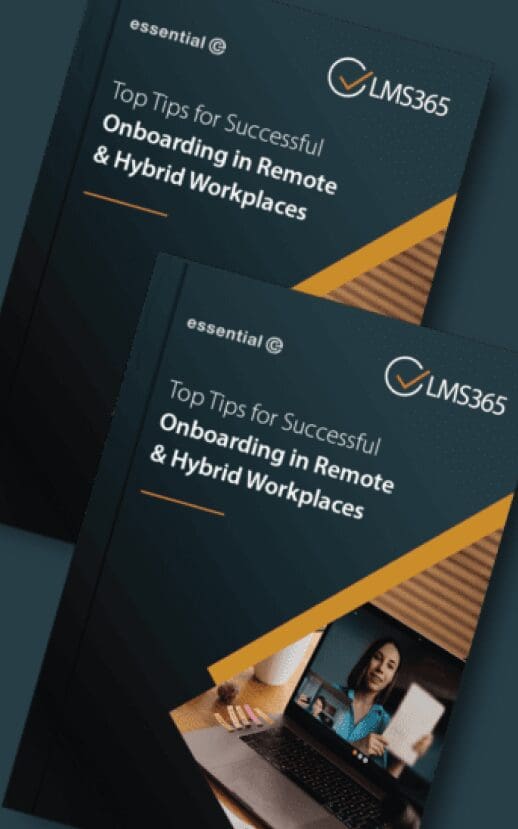Desk booking
How to configure Microsoft Bookings to Book Car Parking Spaces
Microsoft Bookings is a user-friendly tool that lets people – inside or outside your organisation – easily find and book available meeting times or services offered by you or your team.
While its primary focus is on booking people’s time and services, ‘at a push’ you can use it to book parking spaces and other resources.
This article takes you through how to configure a car park space booking system using Microsoft Bookings.
You can then use this parking booking service alongside Microsoft Places* or on your company intranet.
*Last time we checked booking parking spaces wasn’t on the Places roadmap.
TL;DR?
Whilst you can use Microsoft Bookings to set up a parking reservation system, but it’s not perfect.
It’s fine for simple car park booking needs, but if you want more control – like rules, usage limits, multi-bay logic, our dedicated resource booking tool takes you further.
Bookings not quite the ticket? Discover other resource booking options
Resource Booking systems for Microsoft 365
These are the steps to configure Microsoft Bookings as a car parking space booking system
How to configure Microsoft Bookings to allow car park booking
Below are the steps to build a service that provides a set number of bookable parking spaces in your office car park.
1. Create a Shared Microsoft Bookings Page
The first thing you need to do is set up a shared bookings page which effectively will be the container for one or more specific services – e.g. ‘Visitor Parking,’ ‘Staff Parking,’ or ‘EV Charging Bay.’
Without this container, you have nowhere to publish or manage those services from.
This next section walks you through the steps, but don’t pay too much attention to what you configure at this stage, as we will create your actual parking service options later.
Open Bookings: Open the following link in your browser: https://outlook.office.com/bookings/
Create Your Services Page:
Click “Create” to add a new Shared booking page
Specify a name for the booking page, e.g., ‘Parking’.
Select a logo file for your page, I chose the classic ‘P’ sign
If you know the hours during which your parking service will be available, you can configure that here. Note, however, that you’ll be able to configure specific hours for each service later.
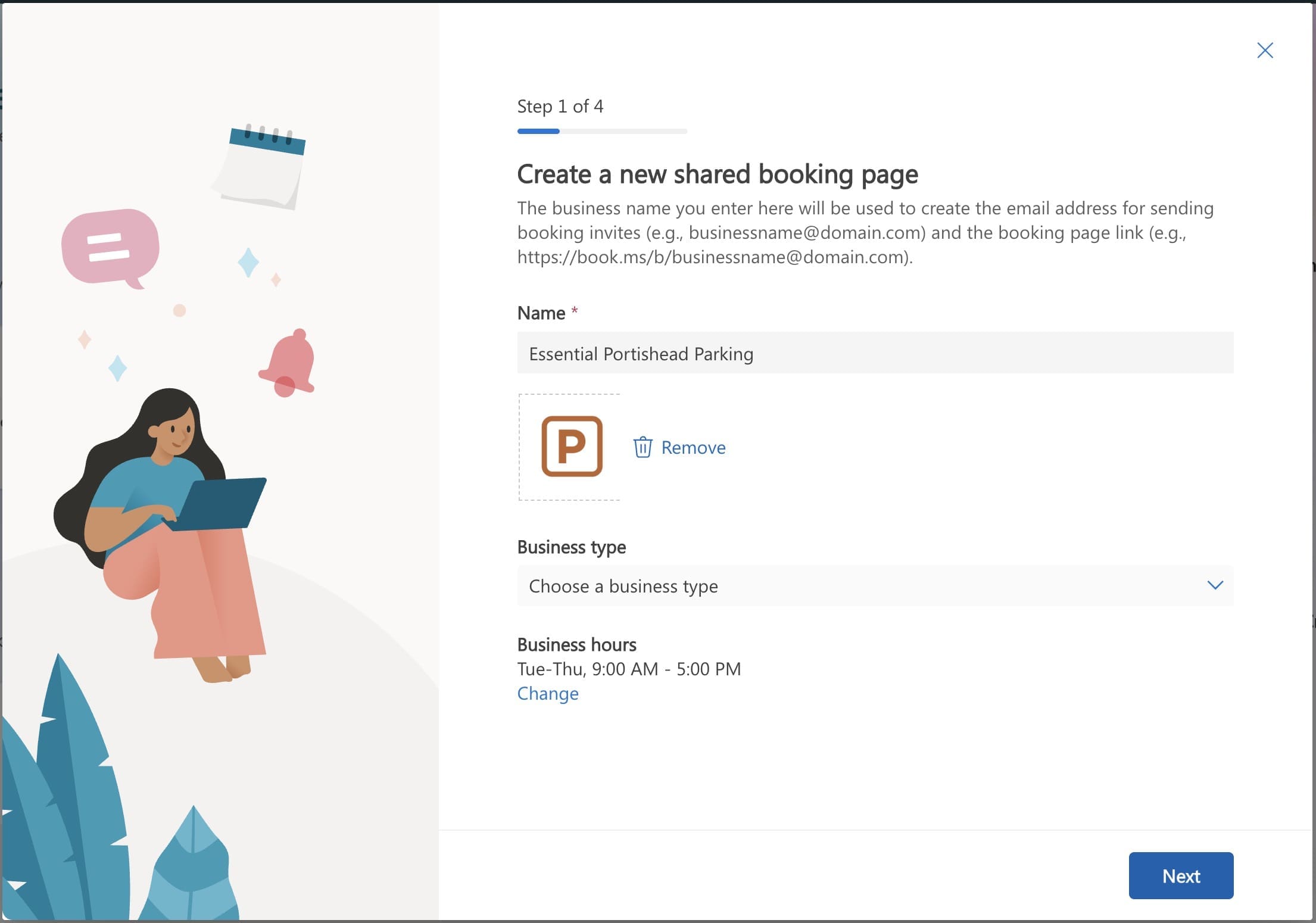
Add ‘staff’ members:
On the next page, you’ll be prompted to invite staff members that will be associated with the service. I just added myself for now – more about this later.
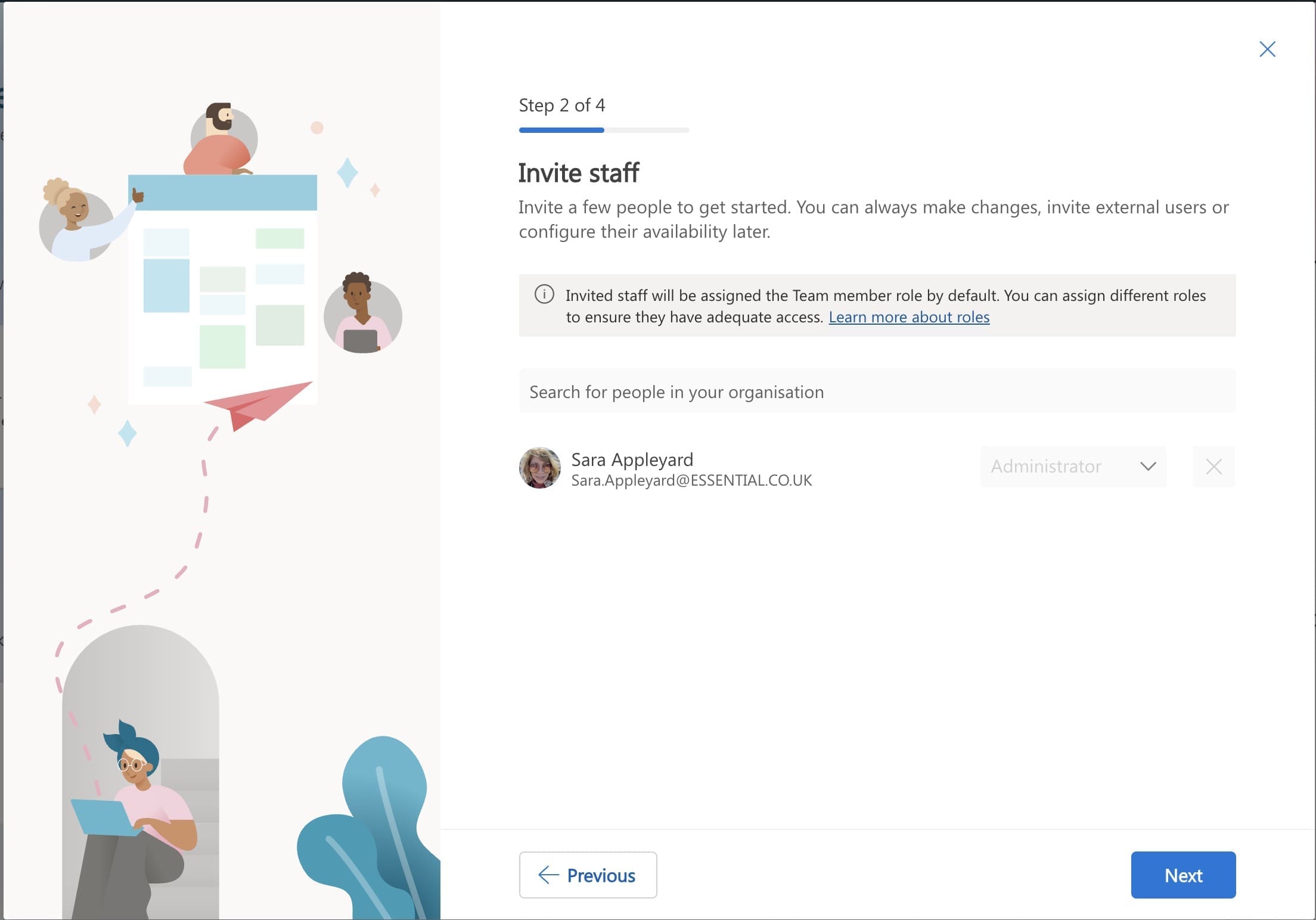
On the last page you can specify whether the booking page will be available to your organisation only or to anyone who has the link.
If this is for parking for your own staff only, I suggest you select ‘People in my organisation’.

After the booking service is created, you’ll be taken to the Booking Page management view from where you can start tailoring you car parking service(s).
2. Creating Parking Services in Your Bookings Page
Add your parking booking service
Click on the Services setting on the left hand side of the bookings management page.
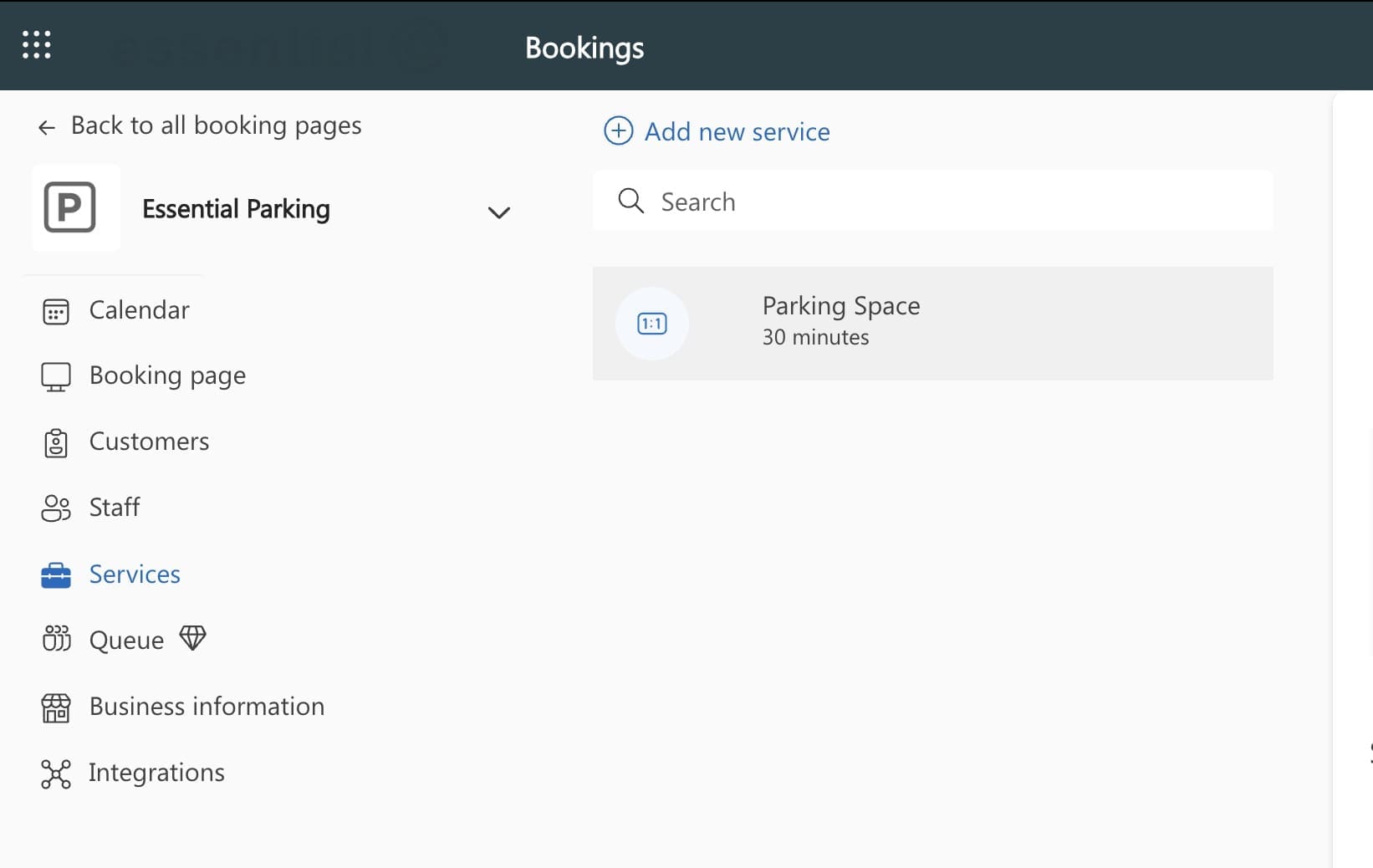
Configure the Basic details:
Service name: Name your Parking service. E.g. Parking Bristol, EV Charging Bays.
Description: Provide information that will help people booking a parking slot, such as gate codes or a contact number.
Location: The Location will be used in the Outlook Calendar booking location field. Use something that will help users of the system find the car park, such as a post code.*
Turn Online Meeting Off: Make sure you don’t have the online meeting switched on, otherwise the booking will create a Teams meeting invitation!
Duration: Set the duration available for bookings, here we’ve assumed a full day booking.**
Buffer time: If you want to offer bookings that are for less than a day (see lower in this section) a buffer time will allow for delayed departure and early arrivals.
Price: We’ll assume this is free but you may wish to apply a charge that will be ‘cross-charged’ internally.
Notes: This is for internal information only – such as ‘Note that parking is also available on an AM or PM basis, please also see these services for all bookings’.
Maximum number of attendees: For ‘maximum number of attendees’ set the number of parking bays you have available. Each time a booking is made on the resource this number will be decremented by 1.
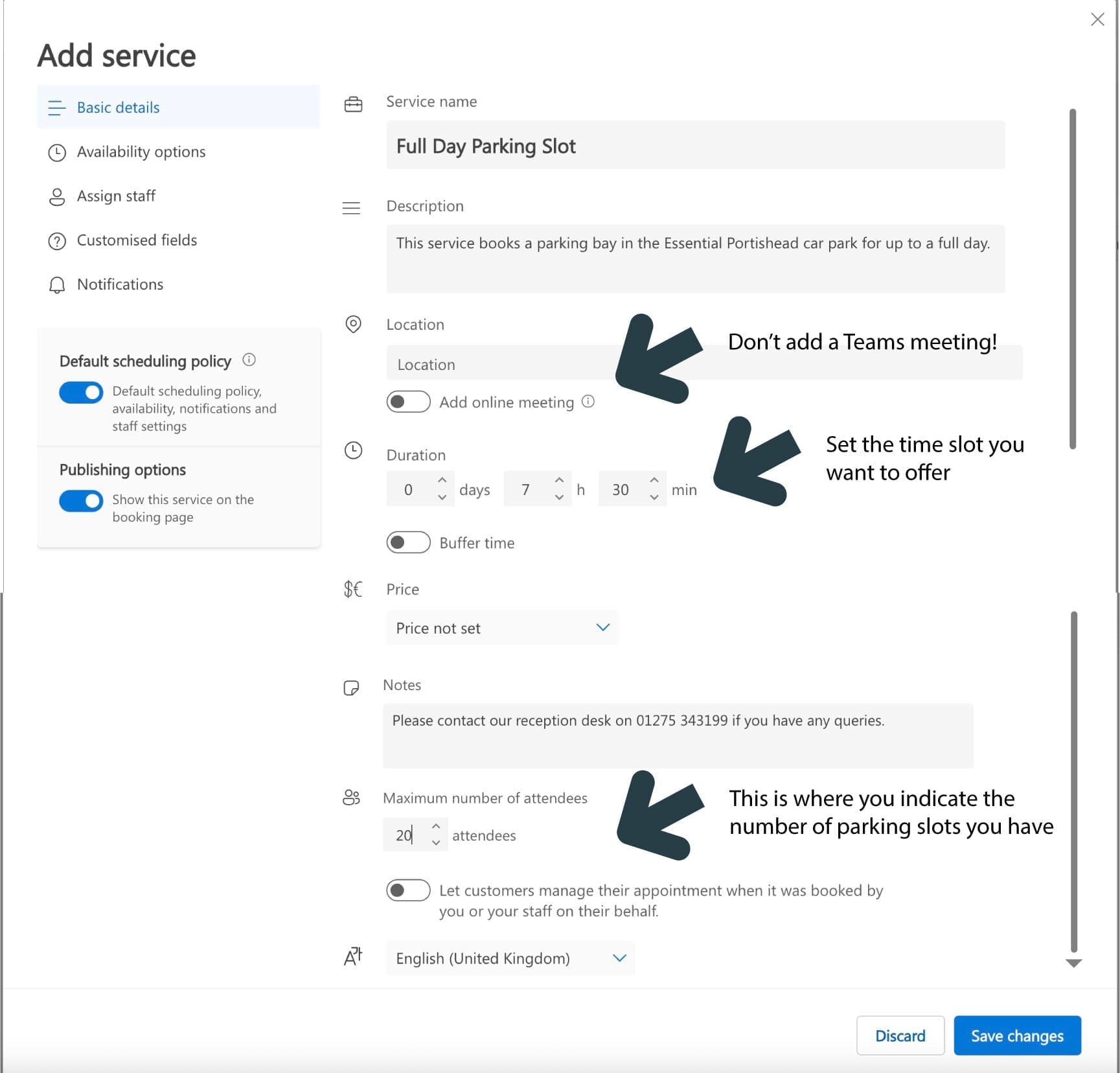
Click Save Changes.
*What if you have multiple office locations?
If you have multiple office locations, we recommend you name your services accordingly. E.g.:
Parking Bristol, Parking London.
If you have multiple locations, and each location offering AM, PM, Full day, you may want to set up a Booking page per location.
**What if you want to offer half day parking?
If you wish to create half day booking slots, i.e., AM and PM as well as a whole day booking, you will need to create 3 separate services, editing the ‘hours’ for the AM & PM slots accordingly using the Availability Options.
For example, below shows the settings you might choose for your AM parking slots.
Along with this setting you may wish to add a buffer time on the Basic settings option to allow for over-runs and early arrivals.
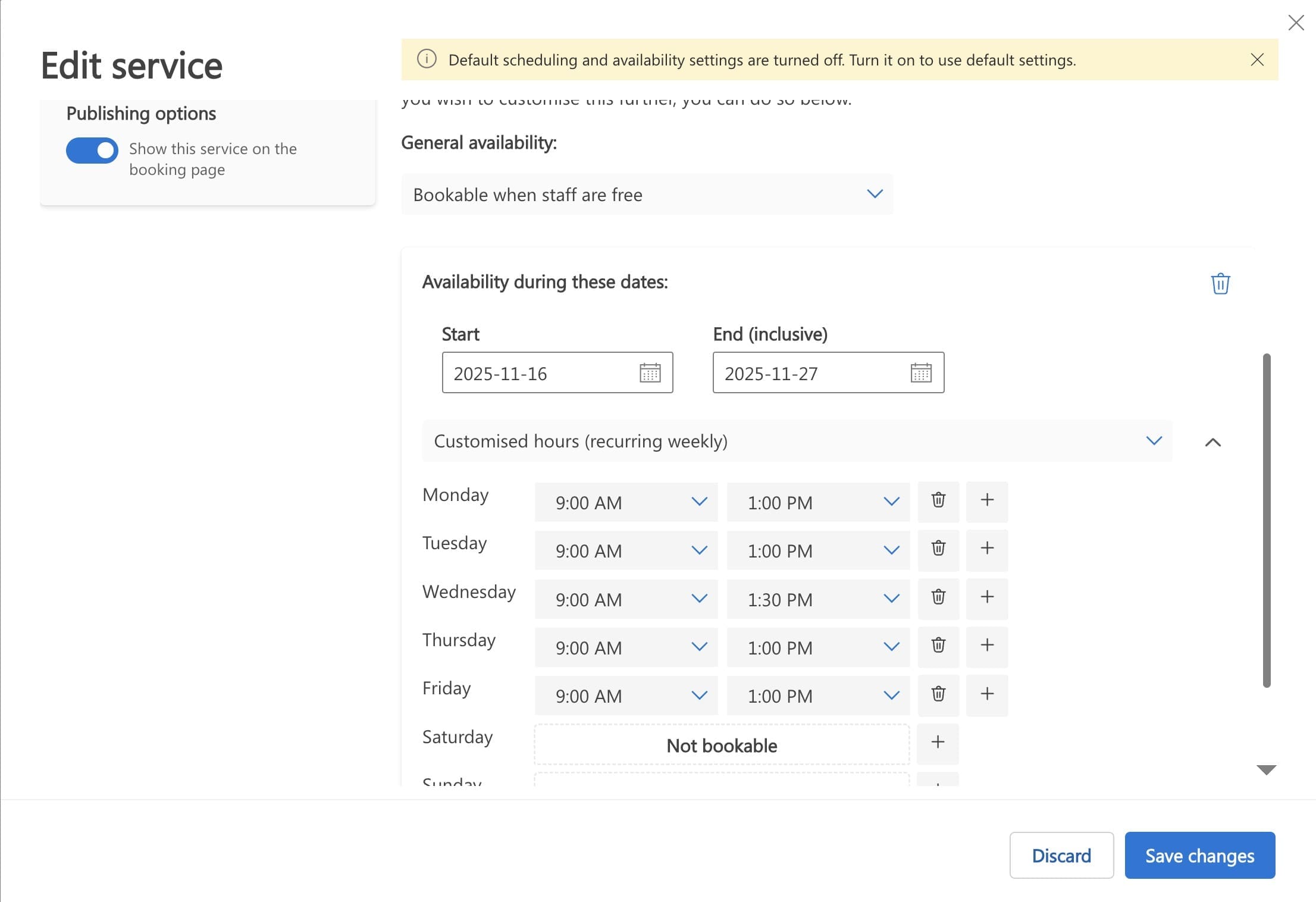
Assign ‘staff’
If you’re just testing for now, add yourself as the assigned staff member.
If in the future you start using your parking booking service service, you may wish to change this to be a designated facilities person or a shared mailbox belonging to the security/reception team so they can see who’s booked in for the car park on any given day.
Also select ‘Assign all of your selected staff for an appointment’ and disable ‘Allow customers to see names of the staff’
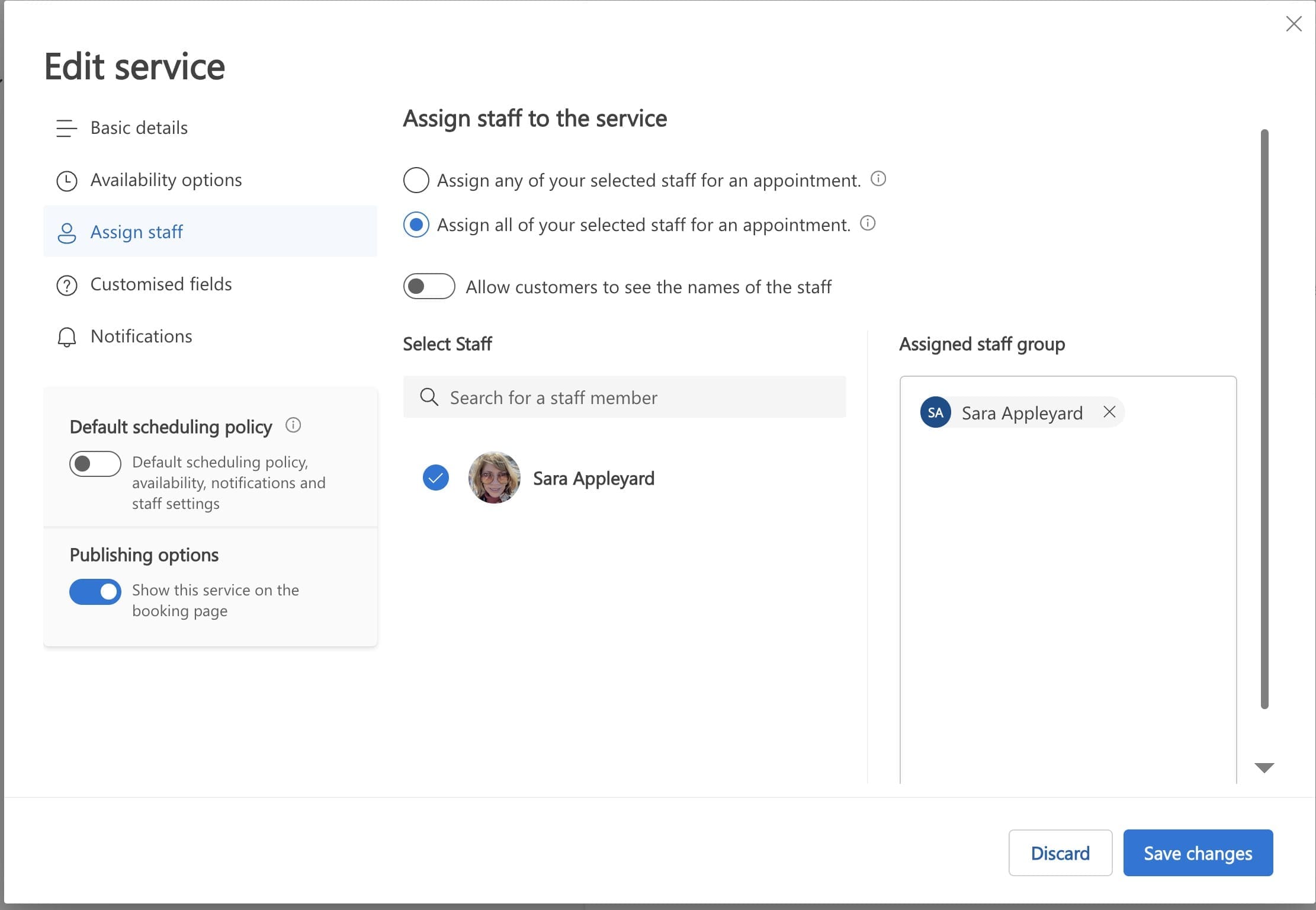
Edit Staff
By default, Bookings checks the Outlook calendar belonging to the ‘assigned staff’ for free time to avoid double-bookings.
As parking is not a service per se, this is not applicable and any pre-existing appointments in their calendars could stop your parking app from working.
To fix this, use the ‘Edit Staff’ option and untick ‘Events on Office calendar affect availability’
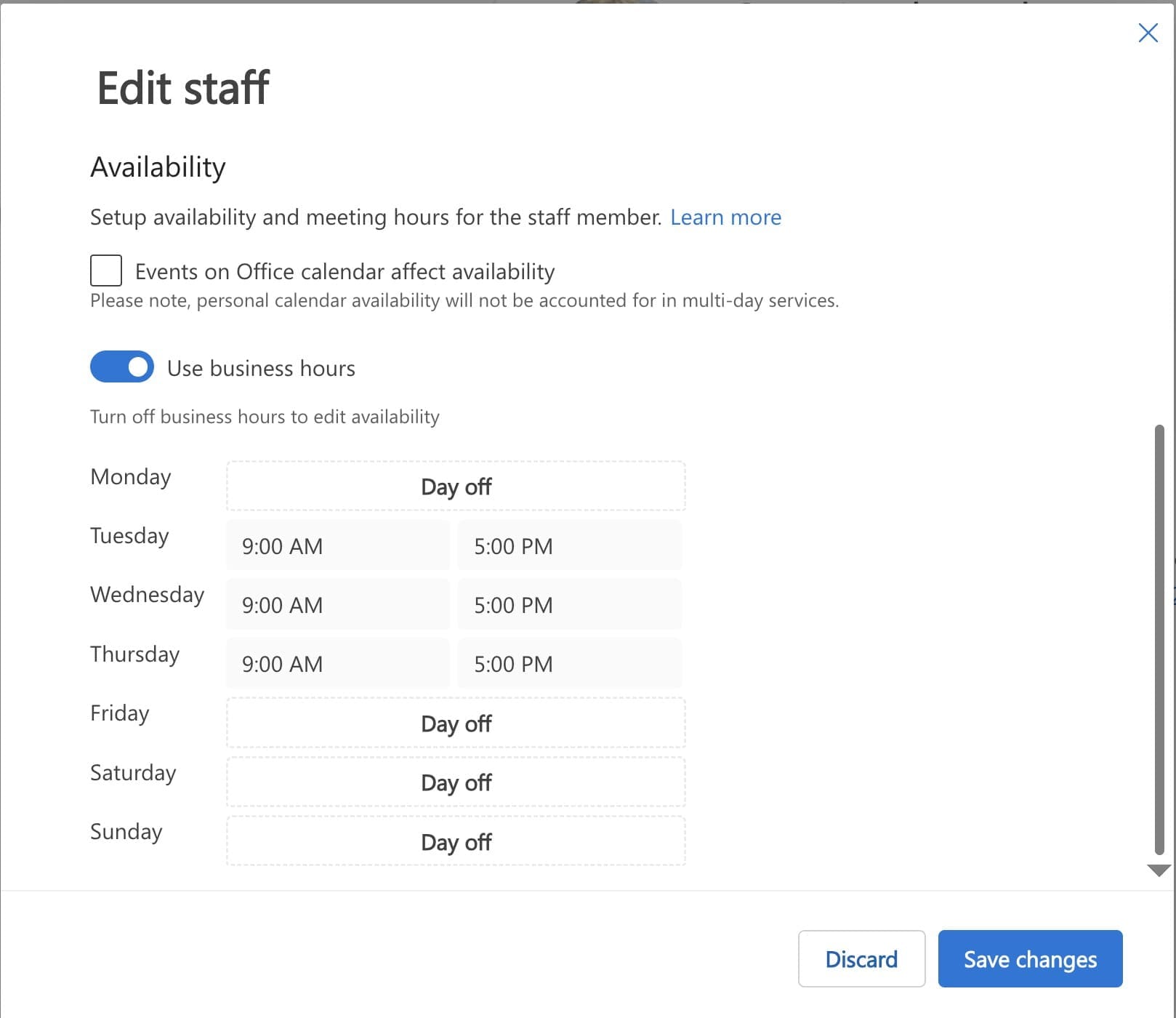
Edit Notifications
Here you can change up the confirmations and reminders sent out.
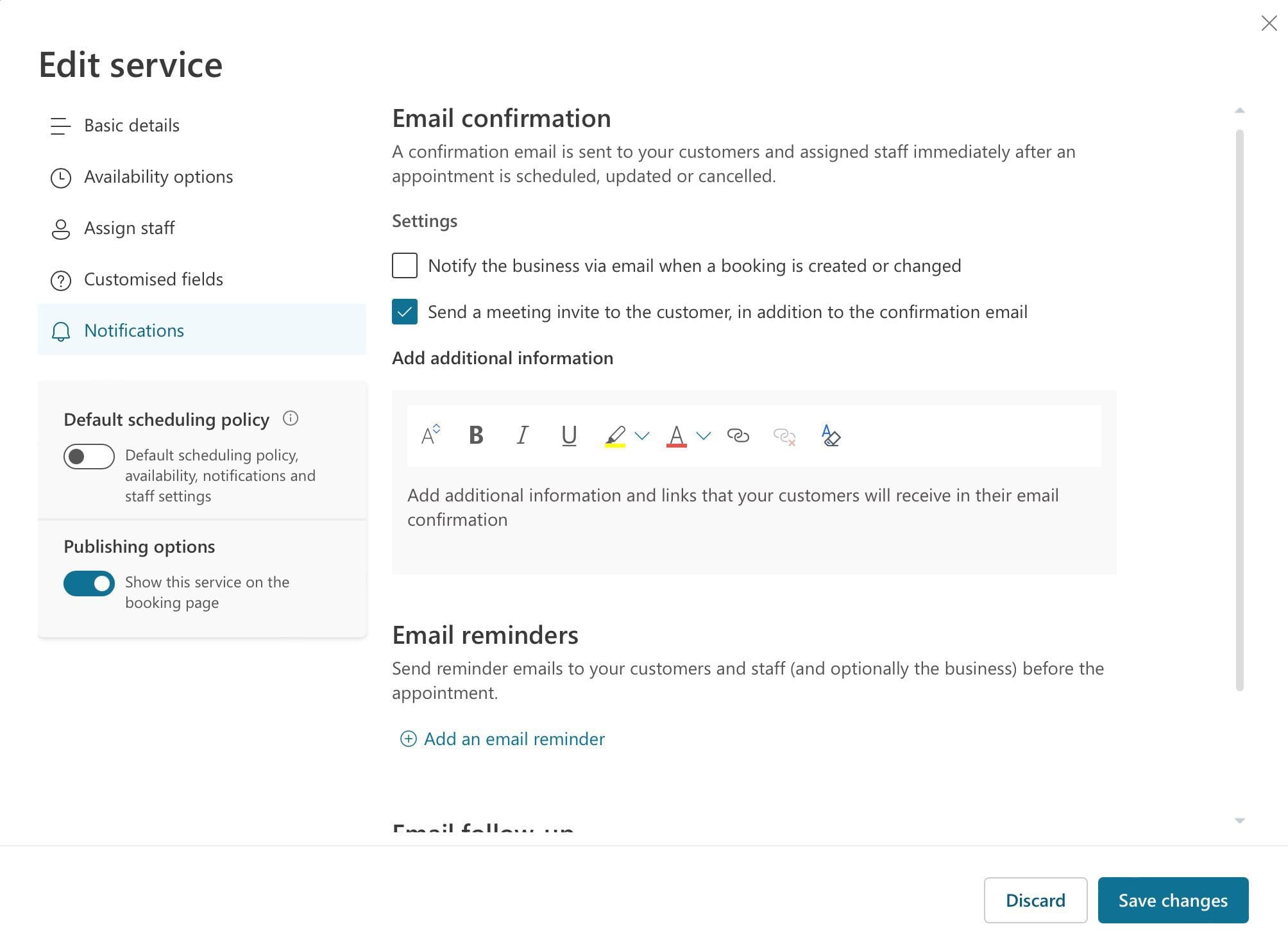
- You can tailor the content in the email confirmation. E.g., you might include a map showing the location of the car parking bays and any other information.
- You can also configure email reminders regarding their booking. A 1-day reminder is enabled by default.
- A follow up email is added by default. You can delete this unless you want a follow up to go to the user after every booking.
Finally I suggest you have the default scheduling policy set to on. This means that each new service you create (like AM Parking or PM Parking) will automatically inherit any defaults.
If you didn’t set scheduling defaults when you created the booking page (in step 1) you can go back and set these using the Business information option in the booking management view.
3. Publish Your Parking Booking Service
Now your system is configured, you can share the link with those that need it.

It is also possible to create a link to embed the booking page into SharePoint and/or your Teams Places App Explore tab (only available for Teams Premium users).
4. Test Your Parking Booking System
Click on the booking link and select the date and time you want to park.
You’ll receive a calendar invitation in Outlook and a confirmation email with an .ICS attachment. Those staff responsible for the parking services will also get a notification (during testing both arrived in my inbox).

CAUTION: Be careful as by default a parking booking will show up in the ‘requestors’ main calendar with a status set as ‘Busy‘. You’ll want to advise users of the system to set their time as ‘Free’ instead.
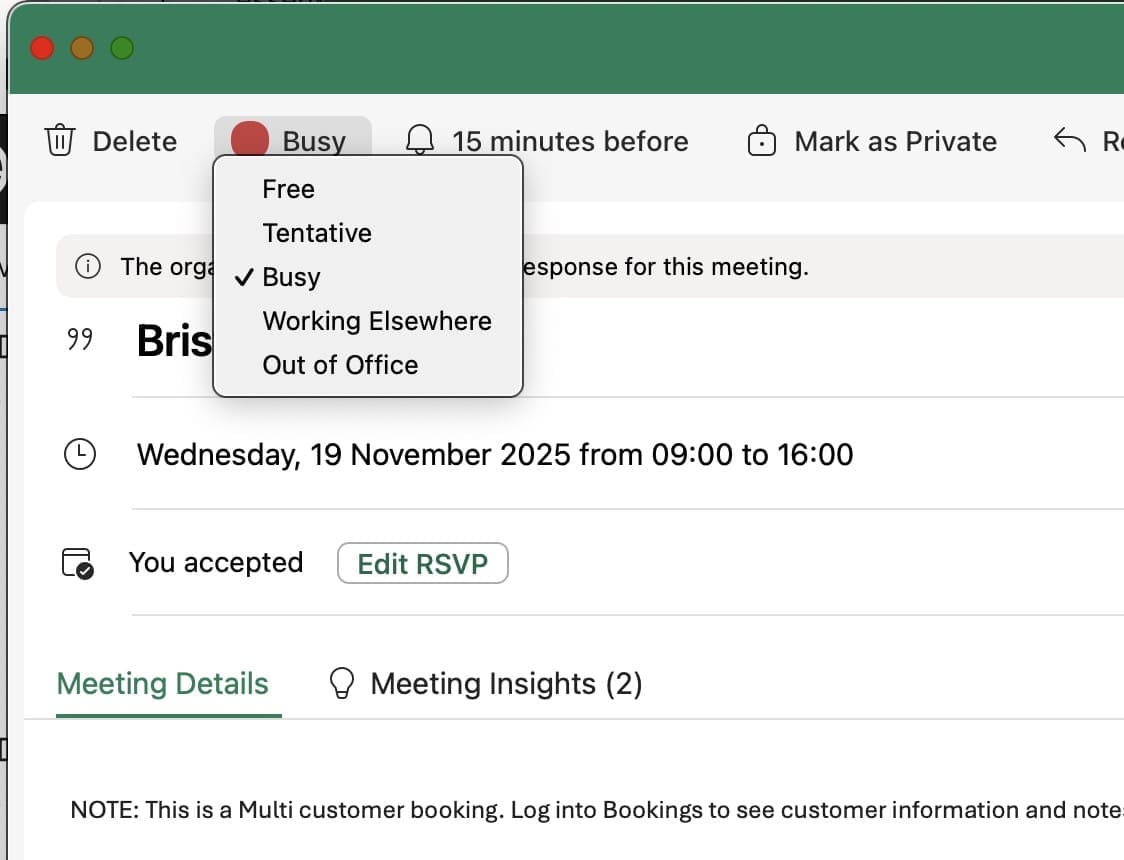
The notification sent to staff responsible for the parking service appears as follows:
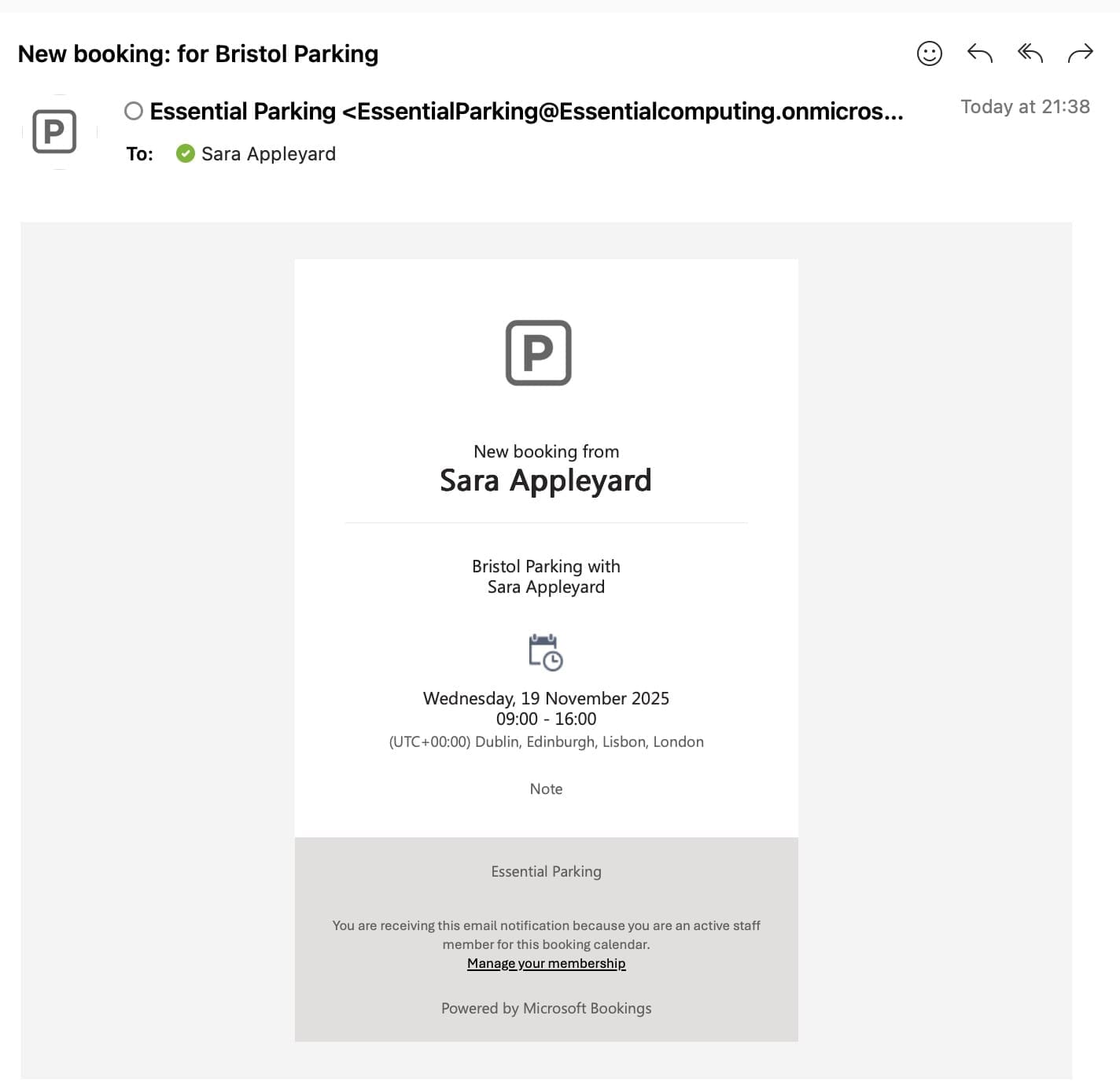
The owner(s) of the service can also access a calendar view of all the bookings, including an indication of what slots have been taken on a daily basis already.
As you will see below, 3 out of 20 available parking slots have been taken – watch out as the use of the word ‘seats’ might be somewhat confusing.
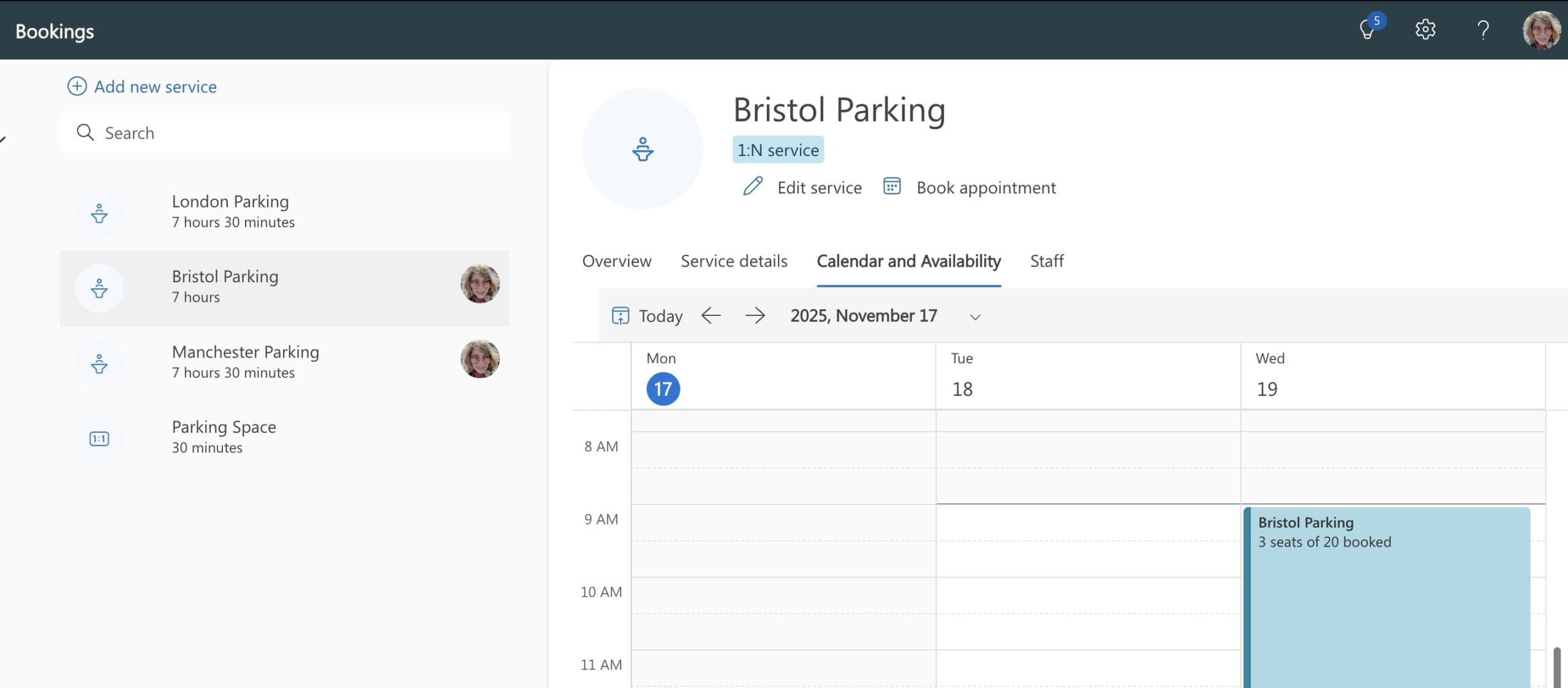
Expect to spend a while testing and refining messages and notifications to get the best user experience.
For example, you might want to configure your Bookings Page further and add branding, colours, terms, or parking policies.
Conclusion
While Microsoft Bookings can be adapted to manage parking, it’s worth bearing in mind that this isn’t what the tool was originally designed for.
As a consequence, there are a few ‘quirky bits’ you’ll need to accept – for instance, parking spaces are referred to as ‘seats,’ and if you create separate AM, PM, and full-day services, staff that are overseeing parking won’t see all bookings in a single, combined calendar view.
As we said earlier, calendar invites for parking will default to Show time as Busy. This isn’t ideal when someone’s simply reserving a parking spot.
There are a few other practical limitations to be aware of:
- No capacity logic beyond ‘number of seats’ – Bookings can limit how many spaces are available, but it can’t differentiate between EV bays or disabled parking, unless you set these up as separate services.
- No check-in or arrival tracking – there’s no built-in way to track whether someone actually arrived or used their reserved space.
- No waitlists or prioritisation rules – if slots are full, users are simply blocked – there’s no smart queue or automatic reallocation.
- No rule-based automation – you can’t limit users to a certain number of bookings per month or automatically enforce parking policies without additional workflow tools.
- No integration with physical access systems – Bookings doesn’t tie into ANPR cameras, barriers, or access control.
If you want something more sophisticated and built for the purpose of booking parking, you may be interested in our resource booking solutions that work with Microsoft Places and indeed, regular Outlook calendar bookings.
Supercharge your Microsoft 365 room booking experience!
Unlock the full potential of your native Microsoft 365 room & workspace bookings by incorporating advanced FM services including parking, catering & visitor management.



